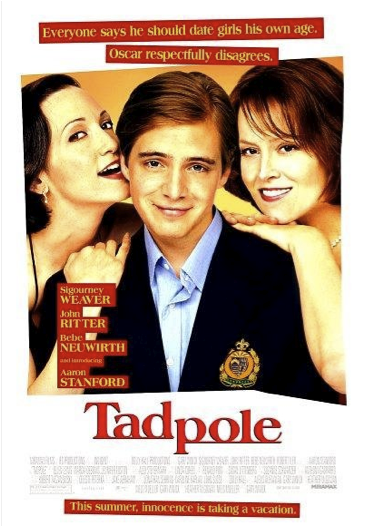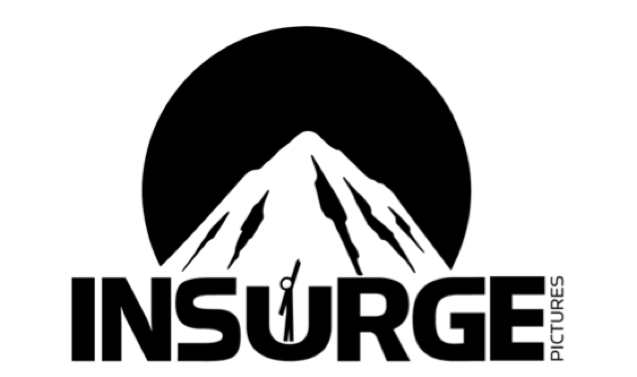Never Say Never, Insurge Pictures, and the Future of Independent Film
Robert C. Sickels / Whitman College

In an earlier Flow essay, I optimistically noted the advent of Insurge Pictures, a newly created “independent” arm of Viacom’s Paramount Pictures Corporation that was set to have an unusual business model in which it would fund ten films a year at $100,000 each in the hope that every once in a while one of their micro-budget productions would hit it big, à la Paranormal Activity (Peli 2007). The good news is that Insurge has struck box office gold with its initial production. The bad news for independent filmmakers is that the film is Justin Bieber: Never Say Never (Chu 2011), which surpassed all expectations in grossing just over $30 million during its opening weekend.1 From a purely business standpoint, Insurge’s decision to fund Never Say Never appears incredibly smart. The company has handled the film remarkably well and deserves all the plaudits it gets. But that its first major success comes with this particular film tells us a lot about the contemporary film industry and the bleak prospects facing independent filmmakers trying to break into it.
Starting in the early 1990s, independent cinema, in part because of the success of Miramax, enjoyed a rapid ascendancy that resulted in every major studio jumping into the indie business by either buying up an extant indie company, like Disney did with Miramax, or by creating a specialty division such as Sony, Fox, and Paramount did with Sony Classics, Fox Searchlight, and Paramount Vantage (née Classics). The consolidation of the independent sector by the majors resulted in a golden age for American indies, during which, as Simon Houpt notes, “commercially oriented independent film distributors were the cool kids in Hollywood, flooding festivals with cash and making big bets that often brought home Academy Awards.”2 But the takeover of the independent scene by the studios ultimately had a deleterious effect, as when you are owned by a major you are by definition no longer independent.
Making money with independent films is difficult as it requires sound marketing strategies and fiscal discipline, but as Anne Thomson observes, “[t]he advantages are clear for experienced indie execs with enlightened management—from Fox Searchlight and Sony Pictures Classics to Miramax and Focus Features—who understand the intricacies of the sector.”3 Unfortunately, as competition within the niche increased, the studios began relying on ever bigger budgets and stars for the films produced under the auspices of their oxymoronically labeled independent arms, thus blurring the lines between their specialty productions and mainstream releases. Additionally, more high dollar companies involved in the sector meant that bidding wars broke out over festival films that could have otherwise made a profit had they been properly valued and distributed as were famous acquisitions such as El Mariachi (Rodriguez 1992) and Clerks (Smith 1994). But when companies like Miramax started paying small fortunes for festival films, like they did when they notoriously paid $5 million for Tadpole (Winick 2002), a $150,000 movie shot on DV that tells the utterly non-commercial tale of a 15-year old who falls in love with his step-mom, it set off an inevitable chain reaction. As production and acquisition costs went up, so too did the costs of prints and advertising and distribution as films had to be pushed harder and released more widely to have a shot at recouping the money invested in them, which resulted in a vicious circle.

Accordingly, costs for specialty films continued to rise unabatedly throughout the 2000s. To wit, according to the MPAA, from just 2006 to 2007, the average cost for a specialty film rose over 60%, to $49.2 million and the average cost of advertising increased 44% as well, to $25.7 million.4 Something had to give, and in the Fall of 2008 everything finally came to a head when the world wide financial crisis hit and financing for acquiring or producing specialty films abruptly dried up, bringing an end to the irrational exuberance that had gripped the independent film sector for over a decade. Within months Warner Brothers shocked the industry by absorbing New Line into the parent company and shuttering both its specialty arms, Warner Independent Pictures and Picturehouse. Likewise, Paramount subsequently folded Paramount Vantage into the parent company and Disney sold off Miramax, the company that had started it all. And this was just the tip of the iceberg; the specialty sector would never be the same again.
But all was not gloom and doom. The shakeout was necessary and inevitable as the growth of studio specialty arms was unsustainable and unwarranted by the realities of the business, much like the housing bubble, to which rise of the studios’ specialty arms has eerie parallels. Ironically, once the indie business was consolidated and costs spiraled upwards, the pressure from the parent companies to make money increased, which consequently shut out from the industry the independent voices for which specialty arms ostensibly had been created to support. After the collapse, there was a glimmer of hope in that perhaps companies would be more open to once again seeking out and supporting new talent, which seemed like a real possibility with Paramount’s creation of Insurge; for the first time in a long time an opening for new voices appeared in the industry, and if Insurge was successful, maybe other companies would follow suit and create a new, more fiscally responsible specialty sector that would give more independent filmmakers a chance to break into the mainstream and result in more independent films being distributed.

Which brings us back to Justin Bieber and Never Say Never. I have a friend who not long ago made a very successful festival film that has opened a lot of doors for her, one of which was at Insurge where she recently pitched her next project. They loved her idea and offered her their supposedly standard $100,000 on the spot. She wisely turned it down, as the film, though low budget, will realistically cost at least $500,000 to make. But kudos are due to Insurge for steadfastly sticking to its business plan. Or are they? No, they wouldn’t budge for an independent project that isn’t likely to break huge but that might make money if handled correctly, but they had no problem kicking loose the lion’s share of Never Say Never’s reported $13 million budget, which would’ve funded 130 films over the next 13 years if Insurge had stuck to its original financing strategy. Instead, for its first theatrical release the company obliterated its budget model and artistic vision in favor of backing a star driven movie with a built in audience. It’s certainly paying off and I don’t begrudge Insurge its decision, but for a company specifically created to support new talent and distribute what it said would be “crazy, unpredictable, and hopefully awesome movies . . . that a big studio would never release because they’re too risky, too silly, and they don’t star Sandra Bullock,” Never Say Never is depressingly predictable.5 Worse, by immediately garnering an unexpected hit with a 3D star vehicle featuring well known properties (Bieber’s songs), I suspect that Insurge now will be much more likely to make additional comparatively safe but much higher priced pictures than they are to make $100,000 movies, thus running the risk of repeating the mistakes of its specialty arm predecessors and raising the stakes on its subsequent movies, which could once again set off a death spiral of escalating expectations and accompanying cost increases, the likes of which have already killed off distribution avenues for independent cinema once. Sadly, independent filmmakers may have just seen the door to one of their precious few remaining industry outlets slammed shut without their ever having had a chance to make it work.
Image Credits:
1. Author’s screen shot of Never Say Never poster from imdb.com.
2. Author’s screen shot of Tadpole poster from imdb.com.
3. Insurge Pictures’ Logo.
- Stewart, Andrew. “Box Office New: Femmes Fuel Tight Box Office Frame.” Variety.com 13 February 2011. [↩]
- Houpt, Simon. “Indie Boom Going Bust?” The Globe and Mail.com [Canada] 6 September 2008. [↩]
- Thompson, Anne. “Niche Distrib Crunch Claims Paramount Vantage.” Variety.com 9–15 June 2008. [↩]
- Miller, Winter. “The Gap Narrows.” Variety.com 10–16 March 2008. [↩]
- Derousse, Ray. “Can Insurge Start a Film Revolution?” Obsessedwithfilm.com 11 March 2010. [↩]
So, it seems a major issue here, is with Insurge’s failure to maintain it’s own mandate by funding and distributing a film like Never Say Never which pretty much goes against everything it stands for. But, I do not think that Insurge is the indie filmmaker’s last hope. Yes, the filmmakers dropped by Paramount and encouraged to turn toward the Insurge model should be outraged, but they are now poised to take back the indie model that existed before the fiscally confident indie arms of majors took it over. They’re poised to revive it.
Of course, this is all easier said than done, I know. But with these majors and their tiny, barely breathing indie arms unable to engage in the types of early to mid 2000’s bidding wars which jump started the new indie market are now tied up in meeting the bottom line, which is paying the monthly bills on their gigantic overheads. Backlots cost a TON!
And while the majors and their indie arms are busy doing that, passing over less “commercially viable” films for films guaranteed to make money, indie filmmakers may be gaining a special opportunity to navigate the world of funding and distribution without them. With talks of new distribution models always on the table from Netflix funded films to the Amazon film initiative, to AMC Theatres all claiming to have a new hand in giving new talents a voice, filmmakers may have to give up on the hopes of being picked up by a major and search for a different distribution model. Admittedly, some of the aforementioned are bum deals for creatives. The filmmakers may not be getting the best deals in the world. But, that’s why more filmmakers out there arguing for their cause will only advance the new world of the independent film. The more people out there fighting, the more transparent and above bar these new distributors will have to be.
Sure, there’s no blueprint to set the paces for these indie filmmakers. But isn’t that where trailblazers begin?
The above sites the following as the cause of the eventual downfall of the majors independent arms: “As production and acquisition costs went up, so too did the costs of prints and advertising and distribution as films had to be pushed harder and released more widely to have a shot at recouping the money invested in them, which resulted in a vicious circle.” Essentially, these indie arms of majors stopped making indies and started making low budget studio films.
The independent filmmaker starting now should do everything to avoid these trappings. Keep costs low, prints low, spend on marketing and advertising to circulate the word about your film, and hold on for dear life?!
In any event, the good news for indie filmmakers is that audiences are growing weary of the same old same old which is so obviously being peddled to us to meet the major studio’s bottom line, not to enrich our experience. Make beautiful, moving films and they will find life.
Great article!
I remember so vividly Miramax’s explosive popularity and power in the 90s. As a teenager, I became aware of independent film through Trainspotting (1996) and Good Will Hunting (1997). Of course, by then Miramax was owned by Disney. But Miramax seemed to maintain the illusion of independence for many years after these films, perhaps just because of the visibility and strong personality of Harvey Weinstein in Hollywood. It’s interesting to think of the combined forces of the Weinsteins and Michael Eisner during those twelve years of Miramax at Disney. The documentary Waking Sleeping Beauty (2009) explains, rather chaotically, how Eisner led Disney through its feature animation renaissance in the late 80s and early 90s and therefore seemed invincible. I can’t imagine how the Weinsteins thought they would maintain their autonomy?
I think your conclusion on the studio’s expectations of their branches that focus on low budget or art films is right on. These films of course don’t fit into traditional business models. The question of independent film moving forward is how to maintain those “indie” values without falling prey to those models. But how do you tell any business to keep the stakes low?
I have two major issues with this article. The first being that the author does not do enough to criticize Insurge’s obvious oxymoronic existence. The term independent film cannot ever and should never be used in the same sentence as the word “studio.” By the very fact that Paramount or any major studio creates an “independent” wing of its own conglomerate, brain washing, soul crushing, idea destroying self is laughable. True independent film -is- being made out there, completely against and separate from everything the studio system is and stands for. Sadly, the article fails to mention that. The author seems too willing to talk about independent film making within the constraints of the studio world.
The second issue I have with this article, as I mentioned earlier, is the author’s clear lack of knowledge of the kinds of efforts being put forth by independent film makers out there right now – outside of the studio system. In fact, just this past year alone at sundance, dozens of truly independent films (some of which had budgets under $100,000) sold for distribution. While the money hungry studios may have tried to monetize the independent market over the last year, I think that there is a small but powerful group of actual independent film makers out there that have been resisting the studio take over. And now that the studios are struggling and beginning to lose their grip on the independent movement, the time has come for independent film makers to finally retake a genre that has long been bastardized by executives and money hungry institutions out only to make a buck.
The author of this article does seem noble in his intention to explore independent film making’s future, but falls short in terms of independent film making’s present.
Tia, Katherine, and Gabriel, thanks so much for your comments. It’s interesting how passionate people are over this issue and there are certainly a lot of different opinions about the future of independent filmmaking. In a nutshell, I think there are more people making more films than at any other time in history. With the reality of ever cheaper digital technology, there’s been a lot of democratization as concerns production and that’s a good thing. But as of yet there still hasn’t been any major changes as concerns distribution and exhibition. Yes, there are a lot of options through different outlets to distribute digitally, but as Katherine points out those are typically bad deals for the filmmakers. We may reach a point where an individual filmmaker can produce, distribute, and exhibit her own movie and make money doing so, but for the most part we’re not there yet. To whit, last summer the Duplass Brothers were interviewed by Kim Masters on The Business and she asked them why they moved into studio filmmaking given the waves they’d made as “mumblecore” filmmakers, to which Mark Duplass responded, “Contrary to popular belief, there’s not a hefty living to be made in micro-budget filmmaking. And while our movies were showing up on blogs everywhere and on Netflix’ instant viewing there wasn’t a hefty revenue stream coming in so at a certain point Jay and I knew we wanted to make a living as filmmakers, so keeping some sort of eye on the studio system in the future was always happening for us.”
And that’s exactly my point; you can make your film independently and even perhaps generate an audience for it, but if you want to make money off your film–and I don’t mean that in a crass commercial sense, but rather in that you want to be a working filmmaker as a means of paying your bills–then you really do at some point still need affiliation with a studio, and, unfortunately, those opportunities are rapidly shrinking.